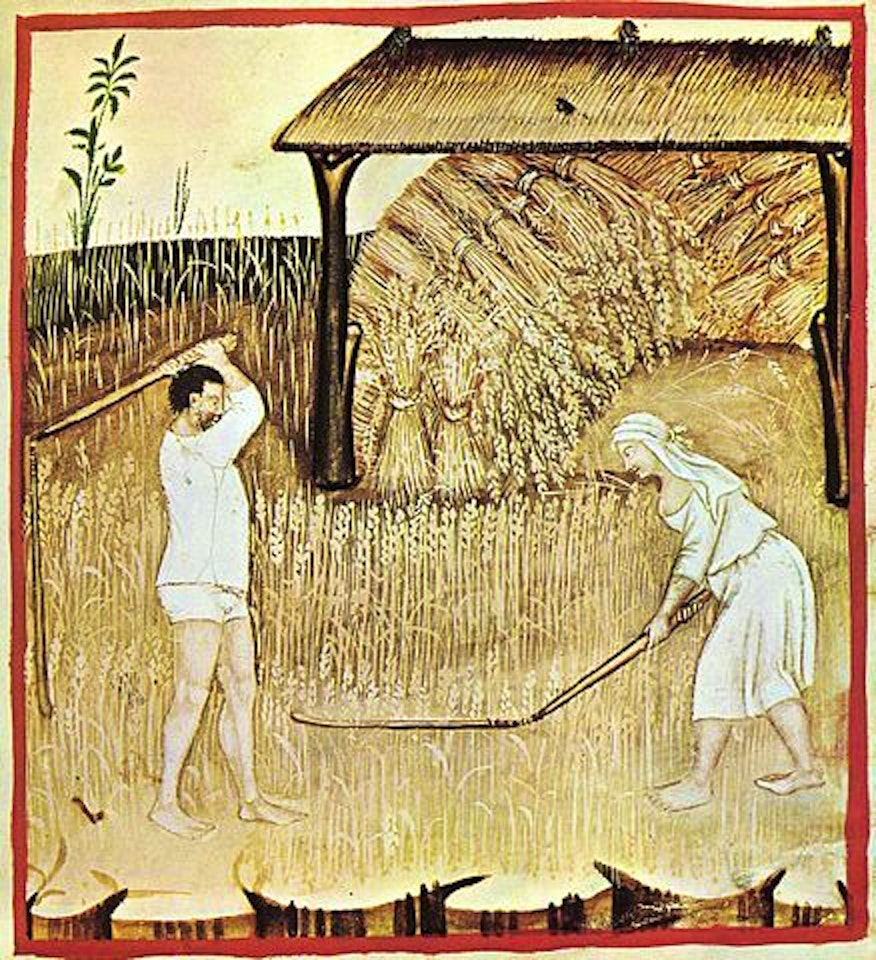
This year, the biggest and longest studies of mammography of all
times, which followed 90,000 women for 25 years, showed that the
procedure has no effect on breast cancer mortality.
During the study, researchers found that the death rate was identical
in all women, the ones who received mammography, and the ones that did
not, and even 22% of screen-detected invasive breast cancers were
over-diagnosed, leading to unnecessary treatment. Therefore, their
conclusion was that
“the data suggest that the value of mammography screening should be reassessed.”
The same conclusion, that mammography screening does not affect
overall mortality was brought by the researchers in the Cochrane
Collaboration review. Therefore, there is a serious concern that this
screening does not actually benefit women.
The recommendations by public health agencies are slowly updated as
well. The American Cancer Society suggests annual mammograms for
average-risk women beginning at the age of 40, and the US Preventive
Services Task Force advises annual mammograms after the 50th year.
Due to all this, women are confused whether mammography is harmful or
not, so this year, the Swiss Medical Board made a clear-cut
recommendation: no more systematic mammography.
Namely, they examined available evidence for a year, and findings
made this independent health technology assessment initiative
“increasingly concerned”, as they found that no evidence showed that
mammograms were safe or that they saved lives.
On the other hand, this screening was able to prevent only one death
for every 1,000 women screened, and caused harm in the rest. Hence, they
recommended that women avoid mammograms and existing programs should be
significantly altered.
Their report was published in February 2014, they stated that women
should be well informed about the benefits and harm of this procedure.
Yet, numerous women are not aware of the fact that there is a lack of
scientific studies which support the health benefits of mammograms.
Furthermore, they are even led into thinking that skipping their annual
mammogram is extremely irresponsible.
On the other hand, numerous doctors are thus manipulated about the
cancer prevention as well, as media propaganda and the cancer industry
think about the financial profits, and ignore research findings.
Therefore, you should know before your next or fist mammogram:
- Mammograms offer fewer benefits that you may think
One survey showed that women believe that it lowered the risk of
breast cancer death by at least half, and prevented over 80 deaths per
1,000 women screened. Actually, mammography at best offers a reduction
of the risk of 20% and prevent in absolute terms only one breast-cancer
death per 10,000 women.
- Mammography may raise the risk of breast cancer in women with a BRCA 1/2 Mutation:
The British Medical Journal (BMJ) published findings which state that
in the case of a specific gene mutation called BRCA1/2 (related to
breast cancer), women are prone to radiation-induced cancer.
Women with this mutation who were exposed to diagnostic radiation
before the age of 30 had a double increased risk of developing breast
cancer, compared to the ones that did not have the mutated gene.
Researchers also discovered that radiation-induced cancer was
dose-responsive, so the risk increases with the dose.
- Frequent False Positives
In America, the possibility of getting a false-positive test over 10
mammograms is an alarming 58 percent to 77 percent! These results lead
to stress, anxiety, and psychological distress, as well as more
unnecessary tests, surgery, biopsy.
- Mammograms may be ineffective in the case of dense breasts
Over half of the women have dense breast tissue, so mammography faces
difficulties in deciphering. As x-rays show dense breast tissue and
cancer white, a radiologist cannot detect cancer.
The law for breast density has been passed in New York, California,
Virginia, Connecticut, and Texas, so radiologists must inform patients
with this kind of tissue that the screening is likely to provide
absolutely no effects. Also, this law is also considered to be passed at
a federal level.
- Other Screening Options
You have the right to choose between other screening options as well,
all with their own advantages and disadvantages. Yet, you need to
remember that cancer can be confirmed by biopsy only.
The waist size is related to the breast cancer risk
Mammography is not the same as prevention, so if you are trying to
avoid this deadly disease, you should focus on its prevention indeed,
which is not an early detection. One way to prevent it is to maintain a
healthy body weight, especially a healthy size of your waist.
Research has conducted on 93,000 mostly overweight post-menopausal
women, showed that, even though researchers measured their overall
health, and cancer status as well, their skirt size (which served as a
gauge of waist size) was strongly related to breast cancer risk.
According to TIME:
“An increase in skirt size was the single most predictive measure of breast cancer risk, the study concluded.
When women went up a single skirt size over a 10-year span
between their mid-20s and mid-60s, they were shown to have a 33% greater
risk of developing breast cancer after menopause. Buying two skirt
sizes up during that same period was linked to a 77% increased risk.”
Clothing sizes may vary, but it is a fact that the bigger the waist
size, the higher the cancer risk. The most common cancer type in women
is breast cancer, and obese women are believed to have a 60 percent
higher risk to develop cancer.
To be more concrete, many breast cancers are fueled by estrogen, a
hormone which is produced in the fat tissue. Thus, the more body fat is
stored in the body, the more estrogen is released. The fat in the
abdominal area is especially threatening.
Additionally, if the waist-to-hip ratio is high, meaning that you
have more fat accumulated in the belly than in the hips, you are at an
increased risk to suffer from chronic conditions.
It also raises the risk of cardiovascular diseases, and it is a
potential indicator of insulin sensitivity. Research shows that the
waist size may predict the risk of diabetes, as well as cancer.
In order to measure the waist-to-hip ratio, you should measure the
circumference of the hips at the widest part, across the buttocks, and
the waist at the smallest circumference of the natural waist, just above
the belly button.
To get the ratio, you should divide the waist measurement by the hip measurement.
In numerous developed countries, the risk of breast cancer is also
increased by obesity, including abdominal obesity. Sugar is one of the
greatest factors there, as numerous studies have shown that the
excessive consumption of sugar leads to obesity, especially the intake
of sugar-sweetened drinks.
Five years ago, UCLA researchers showed that adults who drank at
least one sugar-sweetened drink daily had a 27 percent higher risk to
become obese or overweight. Even the occasional intake of soda led to a
15 percent higher risk.
Experts claim that those “empty calories,” like soda, sugary drinks,
and even fresh-squeezed fruit juice contain fructose, which has been
found to be one of the biggest factors for the rise of obesity and
related health problems, mostly due to its potential to turn on your
“fat switch.”
The real shock came when researchers at the American Heart
Association’s Epidemiology and Prevention/Nutrition, Physical Activity
and Metabolism 2013 Scientific Sessions, showed that these suggested
sugary drinks are responsible for around 183,000 deaths worldwide
annually, including 6,000 cancer deaths, 133,000 diabetes deaths, and
44,000 heart disease deaths.
Believe it or not, even 77 percent of food items in the grocery
stores have sugar, so even though the American Heart Association advises
a daily sugar limit of 6 teaspoons for women and 9 for men, the average
American consumes around 22.
Hence, health agencies should focus on informing people about sugar and its effects, and their role in cancer and obesity.
Yet, the cancer industry is incredibly strong and profitable, with
mammograms as one of the primary sources of financial profit. This is
the reason why the truth is constantly hidden from the public, and the
mounting evidence provided by studies is being ignored.
However, numerous experts believe that various cancer types,
including breast cancer, can be prevented by following some strict
strategies. The risk of breast cancer cannot be reduced by mammography,
but it can be lowered in the following ways:
-Avoid processed foods and sugar, especially fructose. Sugar is
extremely harmful to your health, and it promotes cancer. One of the
most dangerous types is refined fructose, so you should avoid it at any
cost. Most processed foods are abundant in fructose.
-Increase your vitamin D levels. This vitamin affects all cells in
the body, and it is an incredibly effective cancer fighter. It enters
the affected cells and stimulates apoptosis (programmed cell death).
In the case of cancer, the levels of vitamin D level should be
between 70 and 100 ng/ml. It is beneficial as a part of every cancer
treatment and has no side effects.
You should get it through exposure to the sun or a tanning bed, and
if taken orally, balance it with nutrients like magnesium and vitamin
K2.
-Reduce protein intake.
Researchers have pointed out the importance of the mTOR pathways,
which If active, speed up the growth of cancer. You can quiet this
pathway by reducing the protein intake to one gram of protein per
kilogram of lean body mass, or less than half a gram of protein per
every pound of lean body weight.
In most cases, this is between 40 and 70 grams of protein a day, or
2/3 to half of the current portion. In the case of pregnancy, or if you
are regularly exercising, you can consume 25% more.
-Avoid unfermented soy products.
Unfermented soy is rich in plant estrogens, or phytoestrogens, or
isoflavones. Studies have shown that soy combines with human estrogen to
raise breast cell proliferation, and thus elevating the risk of
mutations, while driving the phenotype related to cancer.
-Improve your insulin and leptin receptor sensitivity.
Avoid sugar and grains, and limit the intake of carbs and replace
them with fiber vegetables. Moreover, regular exercise is of great
benefit.
-Exercise regularly.
Exercise reduces the cancer risk as it drives the insulin levels
down, and regulates the insulin levels. It also triggers apoptosis
(programmed cell death), leading to the death of cancer cells. The
decrease in body fat leads to a decreased number of tumors, as exercise
reduces the estrogen levels, and thus prevents breast cancer.
In addition to exercise, try to limit your sitting time to three
hours a day while taking 10,000 daily steps during your non-exercise
hours.
-Maintain a healthy body weight.
Proper diet and regular exercise will provide great results. The loss
of excess body fat will be of great help as fat produces estrogen.
-Avoid estrogen-like compounds such as BPA, phthalates, and other xenoestrogens, as they raise the risk of breast cancer.
-Avoid synthetic hormone replacement therapy, as
numerous breast cancer forms are estrogen-fueled, and the Journal of the
National Cancer Institute published a study which stated that the rates
of breast cancer were reduced along the decreased use of hormone
replacement therapy.
In the case of excessive menopausal symptoms, you may try
bioidentical hormone replacement therapy instead, which includes
molecularly identical hormones to the ones produced in the body, and
they do not cause a destruction in the system.
-Curcumin.
Curcumin is the turmeric’s active ingredient, which has been shown to
be extremely beneficial in the case of cancer. Moreover, research has
found that it has potent therapeutic properties in preventing breast
cancer metastasis. However, note that it is not absorbed easily by the
body, you should combine it with other ingredients, like black pepper.
-You should drink a pint to a quart of organic green vegetable juice every day. In this way, you should enter numerous anti-cancer nutrients in the body.
-You should consume plenty of high-quality, animal-based omega-3 fats, like krill oil. One of the biggest factors for the incidence of cancer is, in fact, Omega-3 deficiency.
-Avoid or limit the intake of alcohol to one glass daily.
-Avoid charring your meats.
Charcoal or flame broiled meat is associated with increased risk of
breasts cancer, as the baking, roasting, or frying of starchy foods have
been found to lead to the creation of a carcinogen, called acrylamide,
which additionally increases the cancer risk.
-Iodine deficiency is related to certain cancer types.
According to Dr. David Brownstein, author of the book Iodine: Why You
Need It, Why You Can’t Live Without It, suggests iodine in the case of
breast cancer, as it has strong anti-cancer properties and leads to cell
death in breast and thyroid cancer cells.
-Avoid electromagnetic fields as they raise the cancer risk.
Source:
articles.mercola.com
Reference:
www.healthy-holistic-living.com
Click Here For More Articles








